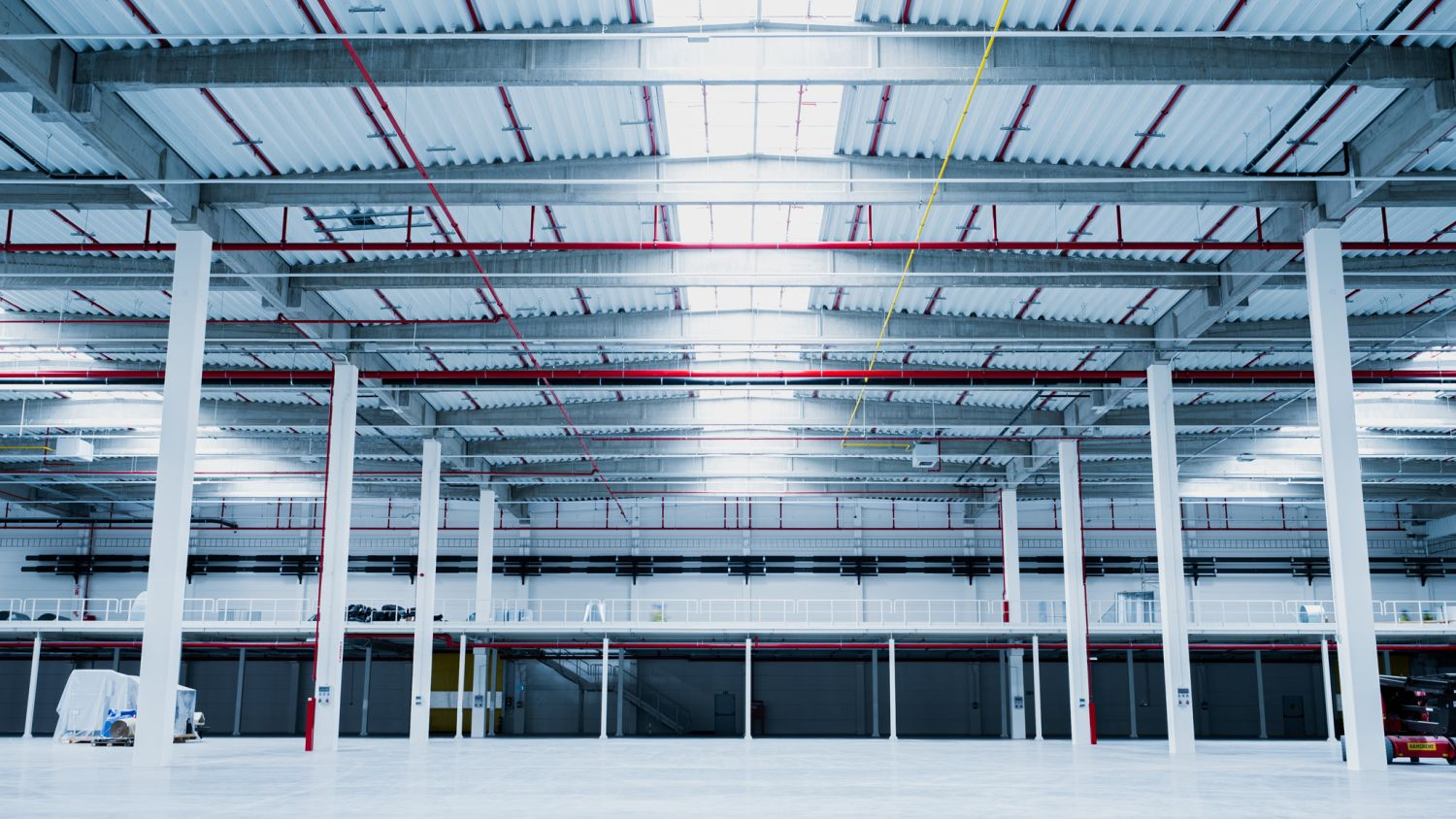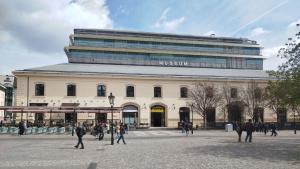
Poland’s industrial sector slowed in 2023, but the market hopes to rebound in 2024. After the peak of take-up and supply in the so-called COVID period falling in 2020-2022, the logistics and manufacturing market has returned in many values to those observed in 2018-2019, says Axi Immo.
Prospects of demand in warehouses
Estimated forecasts summarizing total tenant activity in 2023 indicate that gross take-up should stabilize at around 4.7-5 million sqm; the key in this aspect will, as usual, be the last quarter of this year, when historically the most transactions close. Nevertheless, the previous 18 months in the Polish industrial market have been a time of challenges related to the weaker economy, political uncertainty related to the war in Ukraine, energy price hikes, and high inflation. All of the factors above negatively affected tenant activity, with the logistics sector, retail chains, and manufacturing proving to be the industries with the greatest stability and resilience to the unfavourable macroeconomic situation, according to our predictions. A noticeable improvement was also noted for the e-commerce segment.
In the last 12 months on the Polish industrial market in terms of take-up, it is impossible not to mention the large number of renegotiations and the noticeable trend of prolonged decision-making processes for leasing new space. The last factor influenced the stabilization of rents observed at the end of Q2 2023. Due to relatively high rates and the risk of losing staff, clients were more likely than in previous years to opt for renegotiating contracts (about 35% and growing) rather than choosing new locations. In line with our predictions, the share of manufacturing companies, which accounted for about 20% of completed transactions, increased take-up demand during the more challenging period.
Good location for nearshoring and firndshorings
Global analysts indicate that in the medium to long term, Poland will play a significant role in such trends as nearshoring and friendshoring. We are already one of the largest producers of large household appliances and play an essential role in the automotive sector. Our advantage invariably remains our location on the map of Europe and our professional and qualified staff, who have built their experience working in or for foreign corporations. Nevertheless, it is essential to remember that the processes involved in the greater regionalization of supply chains and the relocation of production to Europe take time.
The trend of leasing big box warehouses
Once again, more than 100,000 sqm of unit transactions were closed on the Polish industrial market. In the year-end period, these included a new deal with a retail company for 120,000 sqm at DL Psary/Czeladź and a lease of 110,000 sqm by Raben at CTPark Warsaw West (Wiskitki). Thus, we maintain the trend of the last two years. On the other hand, the regions with the highest tenant activity are likely to become the Mazovian, Silesian, and Lower Silesian voivodships.
ESG and investment financing
Financing is the word of 2023 in terms of activity for developers who have had to deal with banks’ increased requirements for collateral for pre-lease agreements. Equally important in the context of the year as a whole was again meeting ESG-related guidelines. Bank analysts note that Poland differs from other CEE countries regarding the number of decisions denying loans due to failure to meet ESG criteria.
Which regions are most popular?
Despite the challenges during the economic downturn, investors and developers have focused on opening projects in significant markets characterized by high liquidity, a large consumer market, and an extensive network of connections to other areas of the country and Europe. It should be assumed with a high probability that the total stock of the Polish industrial market at the end of 2023 will reach 31.5 million sqm, which will maintain about a 15% growth rate. Developer activity at the end of 2023 should reach 3.6-3.7 million sqm, noting that 60% of this space will be projects delivered in Q1 of this year, i.e., investments started back in H1 2022 under different market conditions. Nevertheless, it is noteworthy that almost 2/3 (about 20 million sqm) of the total market stock has been built since the beginning of 2017.
From Big 5 to Big 8
The industrial market in Poland is entering another phase of maturity, in which the previous group of five major regions has been expanded to eight, including Warsaw and its surroundings, Łódź, Upper Silesia, Greater Poland, Lower Silesia, and the areas of Szczecin, Tricity, and Kraków. Particularly noteworthy are the last two markets, whose relevance has increased in recent years and have exceeded the thresholds of one million square meters of total stock. Among the aspiring regions is the Lubuskie region, with the litmus test for this market being the intense competition from Szczecin, Greater Poland, and Lower Silesia. As a result of the uncertain geopolitical situation, most developers have been and are expected to remain relatively passive in undertaking activity in the eastern part of Poland.
Less speculative area under construction
In 2023, weakened take-up resulted in fewer speculative projects, whose share of space under construction fell from 61% in Q2 to 53% in Q3 2023. Given the more significant requirements for obtaining financing, we expect this trend to continue in 2024 and the share of projects without signed leases in new supply to decrease by the end of the first half of next year. This situation and lower take-up than in previous years may reduce vacancy rates in 2024.
Developers’ strategy for the next months
Our predictions for the first months of 2024 are that developers will opt for a safe investment strategy, focusing mainly on projects with a significant share of pre-leases and the delivery of BTS projects. The potential economic improvement, announced for the second half of next year, may result in a change and a renewed increase in speculative investments, surpassing the current level.
Warehouses are once again the market leader
After a one-year hiatus, the industrial sector will again lead Poland’s investment market in 2023. The year’s transaction was the acquisition of an 80% stake in 7R S.A. by Scandinavian investment fund NREP. The majority owner gained access to investments with a total area of about 4.2 million sqm consisting of existing warehouse parks and a land bank with projects to be built.
Industrial Market Trends for 2024
According to analysts’ predictions, the improvement in consumer sentiment announced for the second half of 2024 will affect the economic and macroeconomic situation, which will be a reason to increase Poland’s attractiveness and start building new investments. For this reason, we assume that the return of investors and an increase in market liquidity will occur by the last months of 2024. Until then, we will witness a two-speed market in the investment sector. The first group will be funds interested in so-called prime assets, with the lack of high-quality products heralding another phase of waiting for a better moment and, as a result, fewer transactions. The second group, on the other hand, will include distressed owners and value-add projects sought by opportunistic investors. In 2024, we expect a preponderance of investors from Europe, including smaller local players rather than large Asian platforms. The market should also see the formation of so-called investment vehicles composed of several smaller players to invest in sectors with good fundamentals, such as warehouses or retail parks.



